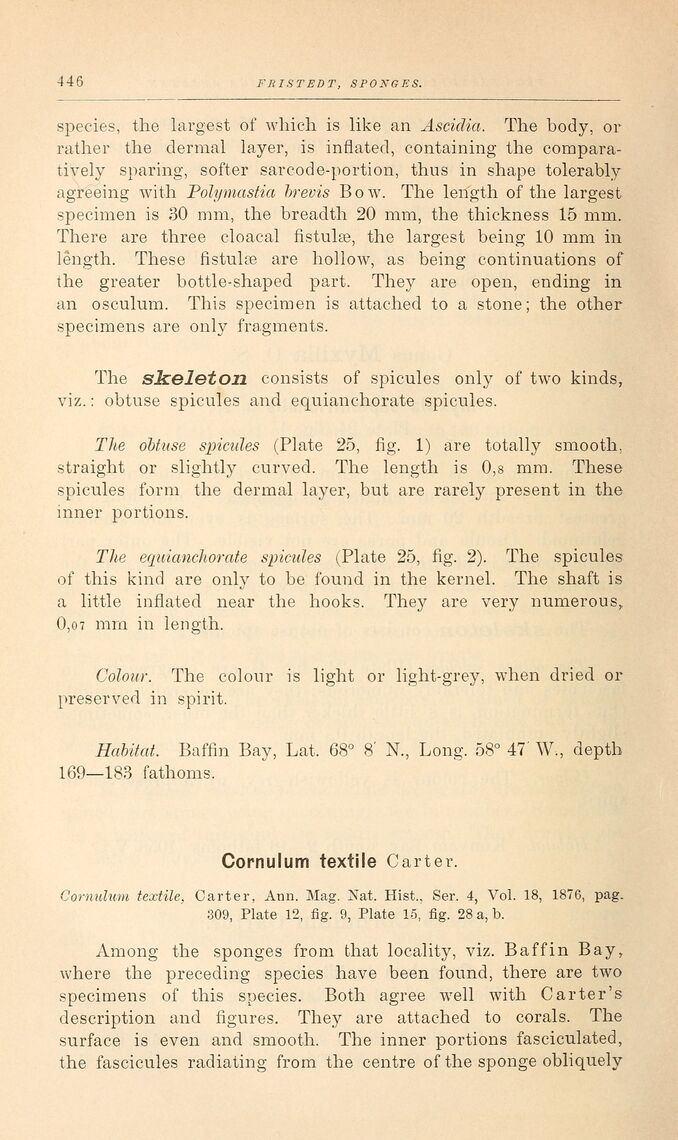
Full resolution (JPEG) - On this page / på denna sida - Sidor ...

<< prev. page << föreg. sida << >> nästa sida >> next page >>
Below is the raw OCR text
from the above scanned image.
Do you see an error? Proofread the page now!
Här nedan syns maskintolkade texten från faksimilbilden ovan.
Ser du något fel? Korrekturläs sidan nu!
This page has never been proofread. / Denna sida har aldrig korrekturlästs.
species, the largest of which is like an Asciäia. The body, or
rather the dermal layer, is infiated, containing the
comparatively sparing, softer sarcode-portion, thus in shape tolerably
agréeing with Polymastia brevis Bow. The length of the largest
specimen is 30 mm, the breadth 20 mm, the thickness 15 mm.
There are three cloacal fistulse, the largest being 10 mm in
length. These fistulse are hollow, as being continuations of
the greater bottle-shaped part. They are open, ending in
an osculum. This specimen is attached to a Stone; the other
specimens are only fragments.
The skeleton consists of spicules only of two kinds,
viz.: obtuse spicules and equianchorate spicules.
Tlie obtuse spicules (Plate 25, fig. 1) are totally smooth,
straight or slightly curved. The length is 0,8 mm. These
spicules form the dermal layer, but are rarely present in the
inner portions.
The equianchorate spicules (Plate 25, fig. 2). The spicules
of this kind are only to be found in the kernel. The shaft is
a little infiated near the hooks. They are very numerous,
0,07 mm in length.
Colour. The colour is liglit or light-grey, when dried or
preserved in spirit.
Habitat. Baffin Bay, Lat, 68° 8’ N., Long. 58° 47 W., depth
169—183 fathoms.
Cornulum textile Carter.
Cornulum textile, Carter, Ann. Mag. Nat. Hist., Ser. 4, Voi. 18, 1876, pag.
309, Plate 12, fig. 9, Plate 15, fig. 28 a, b.
Among the sponges from that locality, viz. Baffin Bay,
where the preceding species have been found, there are two
specimens of this species. Both agree well with C ar ter’s
description and figures. They are attached to corals. The
surface is even and smooth. The inner portions fasciculated,
the fascicules radiating from the centre of the sponge obliquely
<< prev. page << föreg. sida << >> nästa sida >> next page >>